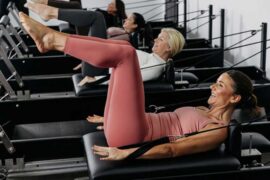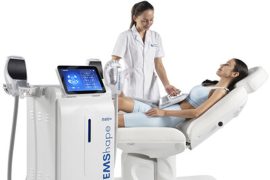Perch is continuing its extraordinary growth and emergence as an innovator in the sports tech space. The MIT-developed, AI-backed technology which uses a combination of 3D cameras and machine learning to monitor movements during weight training has been popping up in more weight rooms across professional and collegiate sports.
Since the beginning of this year alone, 342 devices have been installed in 48 different facilities. Among the newest users of Perch are the New England Patriots, Pittsburgh Steelers, Detroit Lions, Wake Forest Demon Deacons football, Auburn Tigers football, Miami Hurricanes football, North Carolina Tar Heels football, and Baylor Bears men’s basketball.
In the past six months, devices have also been installed at various military bases, fitness and performance facilities, and a growing number of high schools and home gyms across the country.
“These most recent installs further our efforts to help organizations optimize performance, manage fatigue, profile athletes, and quantify daily readiness. For all levels of athletics, from NFL teams to high school athletes, Perch helps prepare you for game day,” says Perch co-founder Jacob Rothman. “Looking ahead, we want to be in every professional and Power 5 and professional sports team in the country, and beyond. The main goal is not just to get Perch everywhere, but let’s get velocity-based training everywhere, and show people how valuable it is.”
The idea for Perch came shortly after Rothman, a former MIT varsity athlete, herniated a disc in his back during a routine workout. While recovering from his injury, he started to brainstorm ideas for a device that could help athletes better quantify workouts in the weight room to prevent injury and improve overall performance. He teamed up with two other athletes on campus Nate Rodman and Jordan Lucier and they began spending entire nights building, designing and testing different prototypes in MIT’s machine shops.
So what is Perch? And why is it taking off?
Perch is a 3D camera and a tablet that attaches to any weight rack. An athlete can walk up, log in on the tablet and start lifting. Movement is tracked by the camera, and everything (sets, reps, velocity and power output) is logged into the tablet. Athletes and coaches can then access the data via a web and mobile application after the workout. The data is also stored and saved in Perch’s web application to best monitor how to approach future workouts.
“When you step into the weight room, it’s super low tech. There’s so much information that is being missed. It’s data that is really valuable. It’s basically making a weight rack smart, that’s how we like to describe it,” says Rothman, noting his hope that Perch will help nudge strength training into a more modern (and safer) direction.
According to Wake Forest Director of Football Sports Performance Chad Bari, the early returns have been very encouraging for the Wake Forest staff. The players have taken to the user-friendly interface, they’ve found new ways to fuel competitive fire throughout the offseason, and most importantly, their training is fine tuned.
“We use velocity-based training constantly, so for our guys to now have automatic feedback of what we want them to accomplish, and for us to be able to collect that data in real time and be able to make adjustments on the fly and maximize what they’re able to give us, is going to be a game-changer,” he says.
In the future, Perch aims to extend its technology beyond barbells, applying its data tracking to other exercises like kettlebells. They could look to cell phones to replace the camera or tablet functions.
“What Perch is now and what Perch will be in five or 10 years from now will probably be very different,” Rothman concludes, “because we’re looking to change with the times and keep up with new technology.”
About Perch
Founded in 2017 by three former student-athletes at MIT, Perch uses cameras and machine learning to monitor movements during exercise and enhance an athlete’s motivation, safety and performance in the weight room. Today, Perch has installed hundreds of devices across the country. Some of the more prominent customers include the New Orleans Saints, Tennessee Titans, Seattle Seahawks, Orlando Magic, Philadelphia Phillies, Dallas Stars, LSU Football and Kentucky Men’s Basketball, among numerous others. The company’s scope has also expanded to various military bases, fitness and performance facilities, and a growing number of high schools and home gyms across the country.
Disclaimer:
The information contained in this article is for educational and informational purposes only and is not intended as a health advice. We would ask you to consult a qualified professional or medical expert to gain additional knowledge before you choose to consume any product or perform any exercise.








